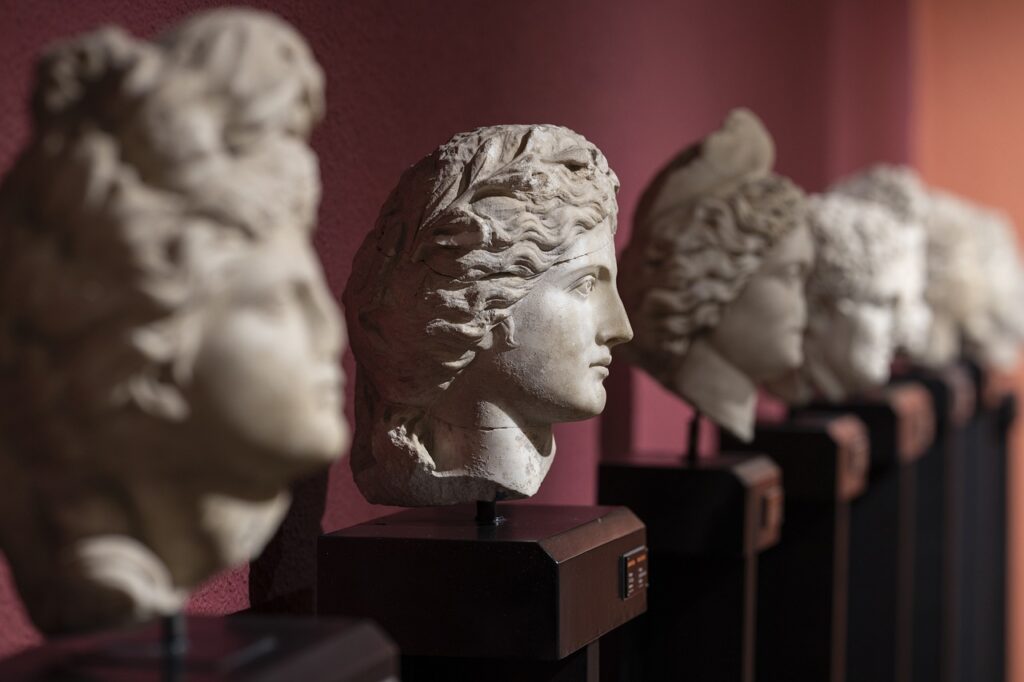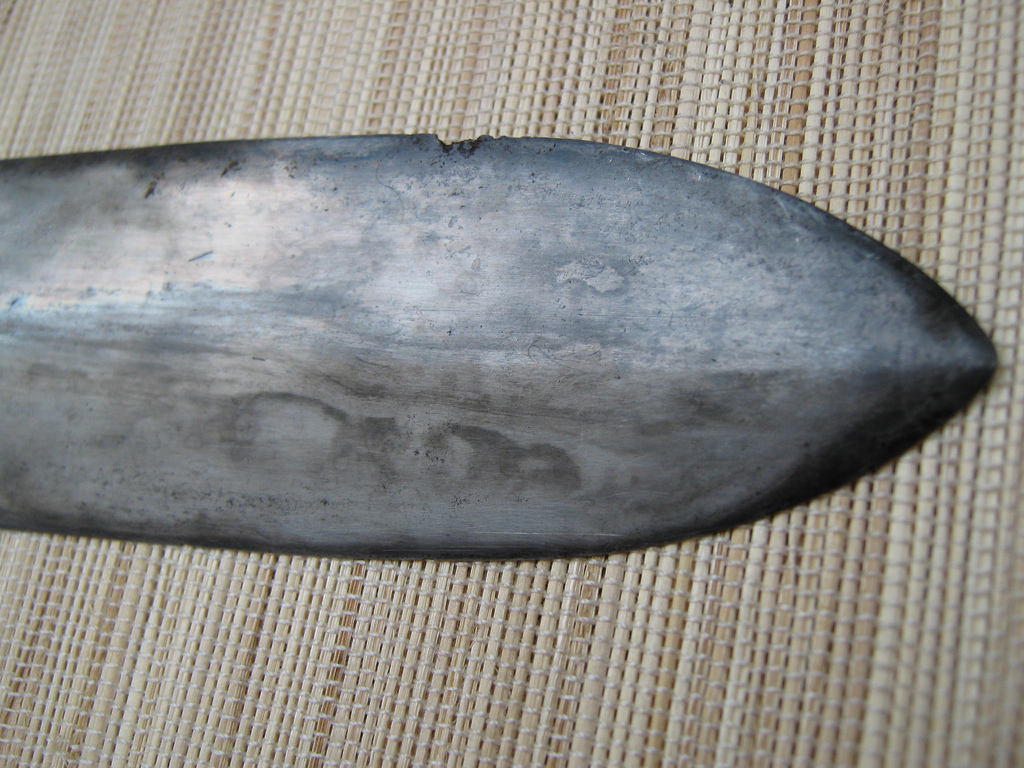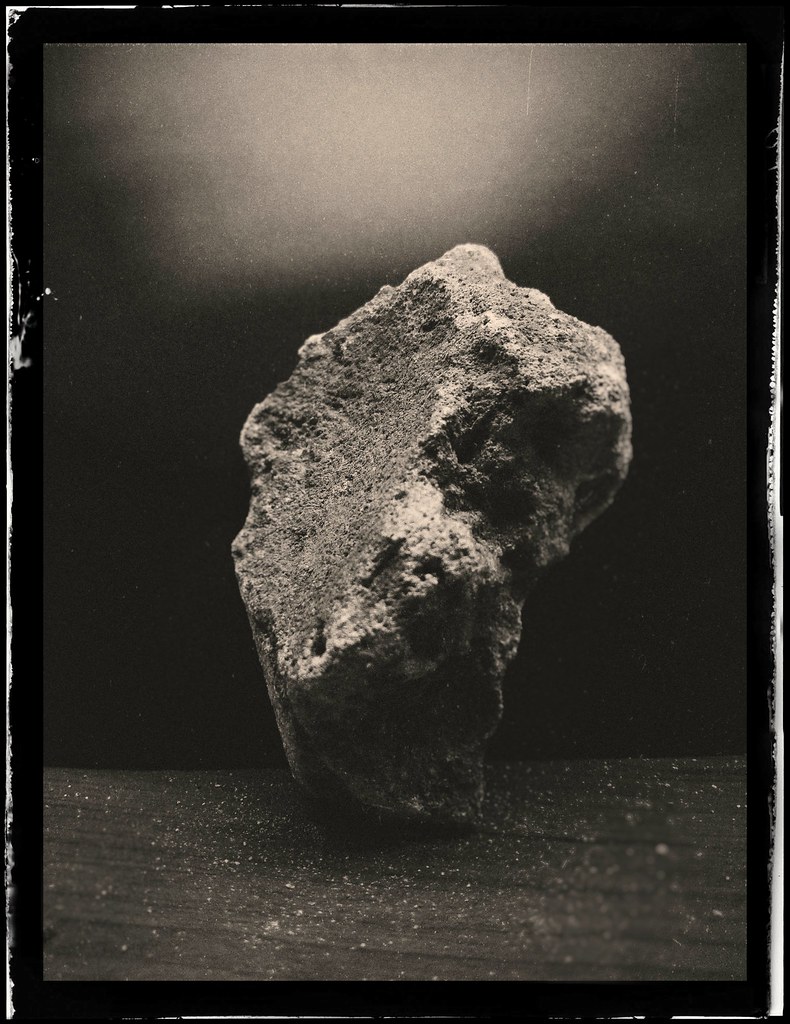
We often envision technological progress as a neat, upward slope, a steady march from rudimentary tools to today’s complex smart devices. It’s easy to look back at ancient civilizations and assume their innovations, while impressive for their time, were inherently primitive compared to our own. This perspective, however, couldn’t be further from the fascinating truth, as archaeological digs and meticulous research consistently unveil a world where ingenuity flourished in ways that still astound us.
The notion that ancient cultures merely stumbled upon groundbreaking technologies, or that such marvels were the sole creations of isolated, idiosyncratic geniuses, is simply erroneous. While brilliant minds certainly played their part, these inventions are powerful testaments to the deep scientific potential and understanding embedded within their respective civilizations. They were born from pressing needs, keen observation, and an intellectual curiosity that drove people to solve problems with solutions decades, if not centuries, ahead of their contemporary peers.
Prepare to have your perceptions of antiquity reshaped as we embark on a thrilling journey through 15 such ‘simple’ ancient tools and techniques that were, in reality, far more advanced than historians initially believed. From unquenchable flames that defied the sea to intricate cosmic computers and daring surgical procedures, each discovery peels back another layer of misconception, revealing an ancient world brimming with sophisticated knowledge and engineering prowess. Let’s dive in and explore the secrets our ancestors left for us to ponder.
1. **Greek Fire: Flames That Don’t Go Out**Imagine the shock of the Umayyad Caliphate’s Muslim fleet in 674 when their ships, attempting to besiege Constantinople, were engulfed in an inferno unlike any they had ever encountered. Naval warfare frequently involved fire, which was typically doused with cloth, dirt, or water. Yet, this particular blaze refused to yield, burning fiercely even on the sea itself, ultimately consuming their entire armada. This was no ordinary fire; this was Greek fire, also known as Roman fire, liquid fire, or sea fire, an invention that literally set the ocean ablaze.
The precise recipe for Greek fire remains one of history’s most tantalizing unsolved mysteries. Historians have long speculated about its components, with petroleum, sulfur, and gunpowder being the main contenders. Given that gunpowder wasn’t widely available in Asia Minor until the 14th century, and sulfur lacked the terrifying destructive power described by contemporary Arab observers, petroleum emerges as the most probable ingredient, hinting at a sophisticated understanding of combustible materials.
However, the true marvel of Greek fire extends beyond its chemical composition; it lies in the ingenious design of the pressure pump the Byzantines engineered to project it. British historian John Haldon, in his essay “‘Greek Fire’ Revisited,” highlights the ongoing challenge for modern researchers to accurately recreate a pump capable of propelling the substance with sufficient force over distances required for effective naval combat—often dozens, if not hundreds, of meters between ships. The fact that ancient engineers achieved such a feat speaks volumes about their advanced hydraulic and mechanical understanding.
The ability to create and deploy such an unstoppable weapon gave the Byzantines a formidable advantage, fundamentally altering naval warfare and allowing them to defend their territories against powerful adversaries. It was a weapon system that was not only militarily effective but also technologically astounding, leaving behind a legacy of awe and an enduring historical puzzle.

2. **Antikythera Mechanism: A Cosmic Clock Before Copernicus**In 1901, off the coast of the small Greek island of Antikythera, sponge divers stumbled upon a treasure trove of sunken wreckage from classical antiquity. Amidst the debris lay a contraption, incomplete and corroded, yet hinting at an almost unbelievable complexity. This was the Antikythera mechanism, a device initially dismissed as an improbable “ancient computer” due to its sheer sophistication, which scholars later reaffirmed after detailed studies in the 1970s.
Now believed to be over 2,200 years old, the consensus holds that this intricate assembly of 37 bronze gears, housed within a wooden box, was an orrery. In essence, it was a mechanical model of the solar system, designed to calculate and track celestial time with astonishing precision. Its discovery fundamentally reshaped our understanding of ancient Greek technological prowess, demonstrating a level of mechanical engineering previously thought impossible for that era.
Modern CT scans have only deepened the awe, revealing a mind-boggling complexity that led a 2021 replication attempt to call it “a creation of genius — combining cycles from Babylonian astronomy, mathematics from Plato’s Academy, and ancient Greek astronomical theories.” This ancient marvel could perform a dizzying array of calculations, including the ecliptic longitudes of the moon and sun, the phases of the moon, the synodic phases of the planets, the excluded days of the Metonic Calendar, and even the Olympiad cycle. It was, quite literally, a handheld model of the universe, centuries ahead of its time, predicting eclipses and planetary movements with an accuracy that belied its ancient origins.

3. **Damascus Steel: Swords That Will Not Dull**From the Middle East, emerging around the 9th century, came legendary Damascus steel swords, renowned for both their striking appearance and their unparalleled durability. These blades were celebrated for being multiple times stronger and sharper than the Western swords wielded during the Crusades, a testament to a metallurgical mastery that captivated warriors and smiths alike. The very name, derived from the Arabic word for “water,” alluded not only to its Syrian city of origin but also to the distinctive flowing, watered pattern that graced its surface.
This unique pattern was no mere aesthetic flourish; it was the visible signature of an extraordinary forging process. Small ingots of wootz steel, imported from distant lands like India, Sri Lanka, or Iran, were melted with charcoal and then cooled at an incredibly slow, controlled rate. This meticulous process created a microstructure within the steel that contributed to its legendary strength, flexibility, and edge retention, making these swords formidable instruments on the battlefield.
Demand for Damascus steel remained high for centuries, a prized possession for any warrior. However, as firearms gradually replaced swords in warfare, the art of its production slowly faded. By 1850, the closely guarded secrets of this unique forging process appeared to be irrevocably lost, leaving metallurgists intrigued but stumped.
Interest was dramatically revitalized by C.S. Smith, a metallurgist famed for his work on the Manhattan Project. Unfortunately, true Damascus steel, crafted with authentic wootz, can never be fully recreated as the original wootz steel is no longer available. Nevertheless, since the 1960s, researchers have tirelessly pursued new forging techniques to achieve similar results, with ongoing studies, such as one from 2018, exploring the addition of carbide-forming elements like Vanadium (V) to replicate its phenomenal properties. The enduring quest to rediscover its secrets underscores just how advanced this ancient material truly was.
4. **The Houfeng Didong Yi: The World’s First Seismoscope**Nearly two millennia ago, in China, a land perpetually threatened by earthquakes, a remarkable invention came to life: the Houfeng Didong Yi, the world’s first known seismoscope. Its creator was Zhang Heng, a polymath who lived under the Han Dynasty from 78 to 139 AD, celebrated as an astronomer, cartographer, mathematician, poet, painter, and inventor—truly an Einstein of his era. His genius was channeled into solving one of humanity’s most persistent and terrifying natural threats.
The design of the Houfeng Didong Yi was as functional as it was aesthetically captivating. It consisted of a large, elaborately decorated copper pot, adorned with eight tubed projections, each meticulously shaped to resemble a dragon head. Below each dragon head, a copper toad was strategically placed, its mouth wide open. This intricate arrangement was far more than decorative; it was the visual interface of a groundbreaking scientific instrument.
As a 2009 study from Taiwan eloquently states, “Zhang’s seismoscope is respected as a milestone invention since it can indicate not only the occurrence of an earthquake but also the direction to its source.” While primary historical sources are somewhat ambiguous about its exact internal mechanics, researchers largely deduce that subtle vibrations from a distant earthquake would cause a pendulum inside the copper pot to swing. This internal motion would then trigger the release of a small ball from one of the dragon heads, which would fall into the mouth of its corresponding toad, thereby indicating the precise direction of the earthquake’s epicenter.
The Houfeng Didong Yi’s ability to detect and directionalize earthquakes with remarkable accuracy, long before the advent of modern seismology, is a powerful testament to ancient Chinese scientific ingenuity. Some researchers even suggest its precision may have rivaled early modern seismographs, solidifying its place as a truly advanced piece of ancient technology.

5. **Roman Concrete: Cement That Does Not Crack**Many of the monumental architectural achievements of ancient Rome, from the majestic Pantheon with its unreinforced dome to their vast network of aqueducts, would simply not have been possible without the revolutionary material known as Roman concrete. Also called opus caementicium, this hydraulic-setting cement mix was a game-changer, famously described by Pliny the Elder as binding rock fragments into “a single stone mass,” making them “impregnable to the waves and every day stronger.”
The earliest documented reference to Roman concrete dates back to 25 BC, appearing in the seminal manuscript *Ten Books on Architecture* by the esteemed architect and engineer Vitruvius. Vitruvius, recognizing its exceptional properties, specifically recommended the use of volcanic ash from Pozzuoli in Naples, which they called pozzolana or pulvis puteolanus. He advised mixing this pozzolana with lime in specific ratios—3:1 for general construction, or a more robust 2:1 if the structure was to be built underwater, demonstrating a sophisticated understanding of material science for various applications.
Initially considered a novelty and used sparingly when Vitruvius penned his work, Roman concrete’s importance escalated dramatically after the devastating urban fire of 64 AD, which consumed two-thirds of the imperial capital. As survivors embarked on the arduous task of rebuilding, Emperor Nero’s new building code mandated stronger foundations. The widespread adoption of Roman concrete, true to Pliny’s description, enabled the construction of incredibly resilient architectural projects that endure to this day, boasting a self-healing chemical reaction that strengthens the material over millennia, baffling modern engineers.
6. **Baghdad Battery: A Rudimentary Taser (for Pain Relief)**Archaeologists coined the term “Baghdad battery” to describe an enigmatic assemblage of artifacts found in Iraq, near the ancient capitals of the Parthian and Sasanian Empires. This intriguing discovery consisted of a ceramic pot, a copper tube, and an iron rod, all believed to have once fit together to form a single, functional device. The most astonishing aspect of this ancient assembly is its apparent capability to generate electricity, a concept conventionally attributed to much later scientific discoveries.
Wilhelm König, then director of the Iraq Antiquities Department, was among the first to theorize its purpose. He proposed that the device functioned as a galvanic cell, used for electroplating objects. This hypothesis, though initially widely accepted, faced significant challenges, primarily because no electroplated artifacts from the same time period or region have ever been discovered. This lack of corroborating evidence cast doubt on the electroplating theory, suggesting a different, perhaps more nuanced, application.
In 1993, Paul Keyser of the University of Alberta presented a compelling alternative hypothesis, one that was less anachronistic and therefore more plausible. Keyser argued that the Baghdad battery was not a galvanic cell for plating but rather functioned as a local analgesic. He proposed it could relieve pain by delivering a mild electrical charge. This ancient device, if his theory is correct, would have served as a sophisticated replacement for older methods of pain relief, such as the use of electric fish, which Greco-Roman societies sometimes employed to treat headaches, gout, and other ailments.
Regardless of its precise application, the Baghdad battery remains a captivating enigma, challenging our timelines for the understanding and practical application of electrical principles in ancient times. Its existence hints at an advanced understanding of natural phenomena that continues to provoke scientific curiosity and debate.

7. **Precision Brain Surgery in the Ancient World**Delving into ancient medical practices often reveals a surprising level of sophistication that defies our modern preconceptions of primitive healthcare. One of the most astounding discoveries involves trepanation—the practice of drilling holes into the human skull. Archaeologists have unearthed thousands of skulls from various ancient civilizations, dating back millennia, that bear clear evidence of this procedure, typically performed to relieve pressure or treat head injuries.
What truly sets these findings apart is the astonishing number of skulls showing signs of healing around the trepanation sites. This indicates that many patients not only survived this incredibly invasive procedure but also lived for a significant period afterward. Such a high survival rate, especially given the lack of modern antiseptics, anesthesia, and precise surgical instruments, suggests an incredibly deep understanding of cranial anatomy and surgical techniques among ancient practitioners.
Imagine the courage and skill required to perform such delicate operations. Without the benefit of contemporary medical knowledge or sterile environments, these ancient surgeons were navigating the complex human skull, likely relying on a profound, empirically derived understanding of safe surgical zones and post-operative care. Their successes underscore a level of medical expertise and bravery that challenges the notion of ancient societies as medically unsophisticated.
These ancient surgeons were far more adept than previously credited, making procedures that still carry risks today, common practice millennia ago. The evidence of trepanation stands as a powerful testament to the ingenuity and practical medical advancements of our ancestors, forcing us to re-evaluate the capabilities of early medical science and the pioneering spirit of ancient healers.
Read more about: Beyond the Huckleberry: The Untold Saga of Doc Holliday, the West’s Most Enigmatic Figure

8. **The Ingenious Water Management Systems of the Nabataeans**Steering our journey towards groundbreaking advancements, we arrive at the remarkable Nabataeans, a civilization that not only carved cities into desert cliffs but also mastered the art of water conservation in one of Earth’s most arid regions. Their very survival and flourishing, famously embodied by the city of Petra, hinged upon an unparalleled understanding of hydraulic engineering that allowed them to thrive against all odds. This was no mere collection of wells; it was a sophisticated, interconnected system designed for maximum efficiency.
The Nabataeans engineered an extensive network, a hidden marvel beneath the desert sands, composed of underground cisterns, intricate pipelines, and strategic reservoirs. These structures weren’t just for storage; they were meticulously designed to capture every drop of precious rainfall, channel it, and then distribute it precisely where needed, ensuring that even during prolonged droughts, their vibrant civilization could sustain itself. This level of environmental adaptation and engineering foresight is truly astounding, showcasing an advanced grasp of resource management.
Their innovative approach to water management stands as a testament to their ingenuity, rivaling many modern techniques used for arid land development. It demonstrates an profound understanding of hydrology and civil engineering, proving that ancient societies, far from being primitive, could devise complex solutions to monumental environmental challenges, laying the groundwork for a thriving culture where water was the ultimate currency.

9. **Ancient Antibiotics: The Surprising Use of Mold**Long before the monumental discovery of penicillin in the 20th century, ancient civilizations were, perhaps unknowingly, harnessing the power of nature’s own antimicrobials. This fascinating insight challenges the narrative that effective infection control is a purely modern innovation, revealing an intuitive and empirically derived understanding of healing agents centuries ahead of formal scientific recognition.
Across diverse cultures, medical practitioners intuitively turned to mold and fermented substances as potent treatments for infections. Ancient Egyptian medical texts, for instance, reference the application of moldy bread directly to wounds to prevent complications, a practice that, from a modern perspective, sounds remarkably close to our understanding of antibiotic action. Similarly, traditional Chinese medicine incorporated various herbal pastes and fermented concoctions, many of which are now understood to possess natural antimicrobial properties.
Modern scientific analysis of these ancient remedies has definitively confirmed the presence of natural antibiotics within some of their key ingredients. This isn’t just a lucky coincidence; it highlights a profound, albeit non-mechanistic, understanding of microbial healing. These ancient healers, through generations of observation and experimentation, developed effective solutions that underscore their advanced practical medical knowledge, providing a surprising glimpse into early pharmaceutical science.

10. **Ancient Underground Cities That Defy Explanation**Venturing deep beneath the sun-baked plains of Cappadocia, Turkey, archaeologists have uncovered an astonishing testament to ancient ingenuity: a vast, subterranean network of cities capable of sheltering thousands of inhabitants. These aren’t mere caves; they are meticulously engineered, multi-level settlements that speak volumes about the advanced planning and construction capabilities of their creators, designed to offer complete refuge from invading forces for extended periods.
These immense underground metropolises were far more than simple hiding places; they were fully functional communities. Inhabitants had access to intricate ventilation shafts that ensured fresh air even at the deepest levels, well-organized kitchens for preparing meals, and surprisingly, even stables for livestock, allowing entire populations to remain hidden and self-sufficient for weeks or months at a time. The sheer scale and complexity of these structures are bewildering, pushing the boundaries of what we thought ancient construction could achieve.
The precision and systematic planning involved in excavating and shaping these expansive cities defy easy explanation, particularly given the presumed tools and techniques of the era. They point towards an advanced understanding of geology, structural integrity, and logistical organization. Even today, the full extent of these buried civilizations continues to be explored, with each new discovery adding another layer to the enduring mystery of how such monumental, hidden architectural feats were accomplished.
Read more about: Unearthing the Enigmas: 14 Mysterious Global Sites That Beckon Every Adventurer and Pilgrim

11. **The Advanced Optics of Viking Lenses**When we picture Viking technology, our minds typically conjure images of longships and battle axes, not sophisticated optical instruments. Yet, archaeological findings suggest that these legendary seafarers may have possessed access to near-perfect optical technology centuries before the formal invention of modern lenses, fundamentally reshaping our understanding of their scientific prowess.
Among the intriguing artifacts discovered are polished rock crystal “sunstones,” whose precise function has been a subject of extensive debate. Some researchers believe these crystals allowed Vikings to navigate accurately even in overcast conditions or when the sun was below the horizon, using their polarization properties—a remarkable feat of practical physics. Furthermore, some lenses unearthed in Viking sites are so exquisitely crafted and optically precise that they are comparable to 19th-century optics, an astonishing leap in technological capability for their time.
This unexpected mastery of light refraction indicates a highly advanced understanding of optical principles that predates the European scientific revolution by many centuries. It challenges the conventional timeline of scientific development and highlights the sophisticated, often overlooked, technical skills present in ancient cultures, hinting at a world where practical application outpaced theoretical frameworks.

12. **The Astounding Engineering of Machu Picchu**Perched high in the Andes, the magnificent Inca city of Machu Picchu stands not only as an architectural marvel but also as a profound testament to ancient anti-seismic engineering. In a region frequently plagued by powerful earthquakes, the Inca constructed their monumental city with a structural intelligence that continues to baffle and impress modern engineers.
The secret lies in the Inca’s masterful stonework, characterized by precisely cut, massive stones that fit together with incredible accuracy, eschewing the use of mortar entirely. This “dry-stone” technique wasn’t just aesthetic; it was a pragmatic solution to seismic activity. The meticulously shaped stones, often with complex interlocking angles, are designed to shift and “dance” during an earthquake, absorbing the shock and then resettling into their original positions without collapsing.
Even with contemporary tools and advanced knowledge, modern builders struggle to replicate this level of seismic resistance and precision in construction. How the Inca developed such profound expertise and executed these intricate techniques without what we consider “advanced” tools remains one of history’s most compelling mysteries. Machu Picchu is a living monument to an ancient civilization’s unparalleled understanding of structural dynamics and environmental resilience.
Read more about: Beyond the Pyramids: 18 Jaw-Dropping Engineering Wonders on Earth
13. **Sophisticated Dentistry in Ancient Civilizations**Our perception of ancient medicine often defaults to rudimentary practices, but archaeological discoveries are increasingly revealing a surprisingly sophisticated level of dental care that challenges these preconceptions. Far from suffering in silence, ancient cultures performed complex dental procedures, indicating a proactive approach to oral health.
Skulls unearthed from ancient Egypt and Mesoamerica offer compelling evidence of these advanced techniques. Researchers have found teeth that were meticulously drilled to address cavities, and even rudimentary forms of dental implants, showcasing an impressive understanding of restorative dentistry. In some instances, intricate gold-wire dental work has been observed, not just for aesthetic purposes but also potentially for stabilization or repair, demonstrating a blend of artistry and practical skill.
Furthermore, it is believed that some ancient civilizations utilized herbal anesthetics to manage pain during these treatments, a crucial element in making such invasive procedures bearable for patients. These early dentists were undeniably more skilled and their methods far more effective than previously credited, forcing us to recognize the innovative spirit and practical medical advancements of our ancestors in maintaining oral hygiene and treating ailments.

14. **The Advanced Surgical Tools of Ancient India**The annals of ancient Indian medical texts unveil a world where surgical prowess was remarkably advanced, challenging the notion that complex operations are a modern invention. These historical documents describe intricate surgical procedures, alongside detailed descriptions of the specialized instruments required to perform them, showcasing an unparalleled level of medical innovation for their era.
Foremost among these medical pioneers was the physician Sushruta, often revered as the “father of surgery.” His treatises meticulously detail a wide array of complex operations, including delicate cataract removal, intricate reconstructive nose surgery (rhinoplasty), and even the suturing of wounds. Accompanying these procedural descriptions are illustrations and explanations of numerous surgical tools—scalpels, forceps, probes, catheters—many of which bear a striking resemblance to modern surgical instruments.
Sushruta’s comprehensive contributions to medicine were astonishingly ahead of their time, demonstrating a systematic approach to surgical practice, hygiene, and instrumentation. The fact that ancient Indian surgeons were performing such sophisticated procedures with tools that echo contemporary designs underscores a profound and practical understanding of anatomy and surgical principles, solidifying their place as true innovators in the history of medicine.
Read more about: Archaeology’s Enduring Mysteries: A Deep Dive into Humanity’s Past Through the Lens of Material Culture

15. **The Great Pyramid’s Mathematical Perfection**Among the most iconic symbols of ancient ingenuity, the Great Pyramid of Giza stands not merely as an architectural marvel but as a profound mathematical and engineering enigma. Its sheer scale and enduring presence are impressive enough, but a closer examination reveals a level of precision that continues to defy conventional understanding of ancient building capabilities.
The pyramid’s base, a monumental achievement in itself, is remarkably close to a perfect square, with sides that vary by only a few inches across hundreds of feet—an astounding feat of surveying and construction without modern tools. Even more astonishing is its near-perfect alignment with true north, a precision that rivals, and in some cases surpasses, that of many modern buildings. Such accuracy suggests an intimate knowledge of astronomy and geodesy that seems incongruous with the era.
Many researchers propose that the Great Pyramid encodes a wealth of astronomical, mathematical, and geometric knowledge far beyond what was previously believed possible for its builders. The sustained debate and ongoing discoveries surrounding its construction continue to deepen the mystery, prompting us to re-evaluate the intellectual and technical capabilities of ancient Egyptian civilization and its builders’ profound mastery of both practical and theoretical sciences.
What Else Have We Overlooked?
Every new archaeological dig, every translated text, and every re-examined artifact forces us to expand our perceptions of what ancient civilizations were truly capable of. From the ingenious water management of the Nabataeans to the surprising precision of Viking optics and the mathematical perfection embedded in the Great Pyramid, our ancestors displayed knowledge and skills that, in many unexpected ways, rival—and sometimes even surpass—our own. Could there be even more lost advancements, more profound understandings of the world, waiting to be unearthed beneath the sands or beneath the waves? The deeper we explore into history’s forgotten corners, the more we realize that the ancients may have been far more advanced than we ever dared to imagine. Their legacy is not just one of stone and bronze, but of enduring curiosity and astounding ingenuity, a reminder that the path of human progress is anything but linear.





